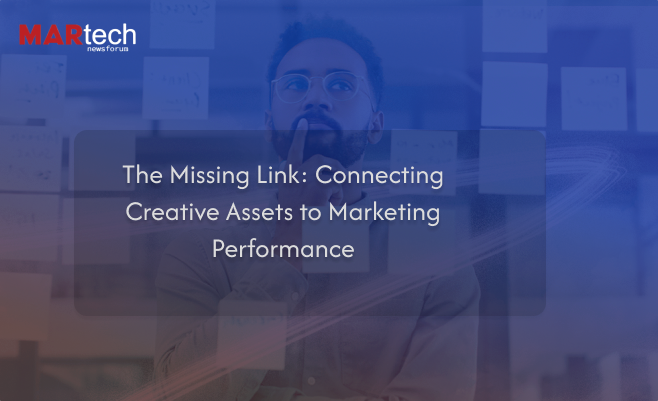
In a marketing landscape driven by data, optimization, and performance metrics, one element has consistently remained elusive: creative assets. For years, marketers have poured time, money, and talent into developing high-quality content — from display ads and video campaigns to social media posts and branded experiences — without being able to accurately measure the contribution of each asset to campaign success. But that’s beginning to change.
Today, the intersection of creative and performance is emerging as the next big frontier in marketing technology. New platforms, frameworks, and data strategies are aiming to solve a long-standing problem: how to directly connect creative content to bottom-line marketing results.
The Creative Blind Spot
While performance marketing has evolved dramatically — with advanced attribution models, real-time dashboards, and automated media buying — creative output has lagged behind in terms of data transparency. Creative teams produce thousands of variations of ads, yet marketers rarely have visibility into which visual elements, copy styles, or formats actually drive engagement, conversions, or ROI.
The result? A creative blind spot.
Marketing leaders have long suspected that creative is a major driver of performance. In fact, a widely cited Nielsen study found that creative quality accounts for 47% of a campaign’s sales contribution, far outweighing targeting or media placement. However, the tools and processes required to extract and act on creative performance data have been lacking — until now.
The Rise of Creative Intelligence
In response, a new category of martech solutions has emerged under the banner of Creative Intelligence. These platforms aim to bridge the gap between content creation and performance analysis by using artificial intelligence, metadata tagging, and advanced analytics to decode what’s working — and what’s not — at the asset level.
Platforms like CreativeX, VidMob, and Adobe Experience Cloud are leading the way, offering features such as:
- AI-driven asset analysis: Automatically tagging and analyzing images, videos, and ad creatives to identify patterns across high- and low-performing assets.
- Creative scoring models: Assigning performance scores to each creative element based on historical data and campaign results.
- Real-time feedback loops: Allowing marketers to optimize creative elements mid-campaign, rather than waiting for post-mortem reports.
The result is a data-backed creative process, where subjective opinions are replaced with performance insights, enabling faster decision-making and improved outcomes.
Breaking Down Silos
One of the biggest barriers to connecting creative to performance has been the siloed nature of marketing teams. Creative professionals, media buyers, and data analysts often work in separate systems, guided by different KPIs. This fragmentation not only slows down workflows but also prevents a unified view of campaign performance.
To solve this, organizations are investing in integrated martech stacks that bring creative and performance under one roof. From dynamic creative optimization (DCO) platforms to centralized digital asset management (DAM) systems, the goal is to enable collaborative, data-informed workflows across all stages of the content lifecycle.
Leading brands are now adopting end-to-end solutions that include:
- Creative versioning and testing tools integrated directly with ad platforms.
- Performance dashboards that visualize creative-level impact across channels.
- Cross-functional reporting models that align creative and marketing KPIs.
The Business Impact
The ability to tie creative assets directly to marketing performance has significant implications for ROI, efficiency, and creative strategy. Brands that leverage creative data effectively can:
- Improve media efficiency by allocating spend toward top-performing creative variations.
- Reduce production waste by cutting underperforming formats and messages early.
- Accelerate time-to-market by eliminating guesswork and approval delays.
- Scale personalization by identifying which creative types resonate with specific audiences.
More importantly, it transforms the role of creative from a cost center to a strategic growth driver.
For example, a global consumer brand using AI-powered creative analytics saw a 38% increase in ROAS within a single quarter by optimizing campaigns based on asset-level insights. Another retail advertiser reduced campaign development time by 30% by eliminating redundant creative testing through automated scoring.
What’s Next: The Creative Performance Era
The movement to connect creative assets to marketing performance is more than just a technology trend — it represents a fundamental shift in how brands think about content. No longer is creative seen as a one-off production task; it is now a continuous feedback loop, informed by data and aligned with business outcomes.
As we move into the next phase of Martech maturity, expect to see:
- Creative briefs informed by predictive analytics
- Increased investment in creative ops infrastructure
- More collaboration between creative, data, and media teams
- Automation of creative decisions at scale
In this new era, the most successful marketers will not be those who simply produce more content, but those who understand exactly which content works — and why.
Conclusion
The missing link between creative and performance is finally being addressed — not by chance, but by design. With the right mix of technology, strategy, and collaboration, brands can unlock the true value of their creative assets, turning design into data and storytelling into strategy.
Marketing success has always depended on great ideas. Now, with creative intelligence, those ideas can finally be measured — and scaled.